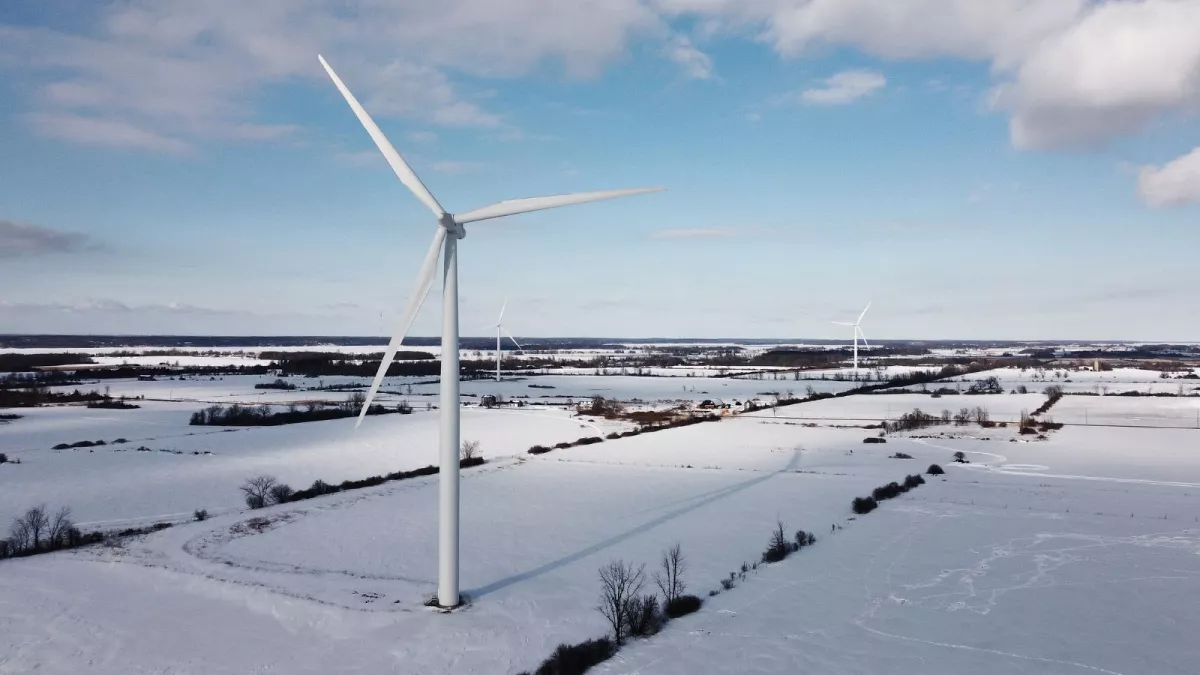Wind power stands as a cornerstone in the global initiative to decarbonize energy grids. However, the construction of traditional wind turbines relies heavily on carbon-intensive materials like steel. In a pioneering move towards greener energy solutions, Swedish start-up Modvion has embarked on a mission to introduce wooden wind towers, effectively reducing CO2 emissions and enhancing the sustainability of wind power generation. Modvion’s innovative approach not only addresses the environmental impact of wind power infrastructure but also presents a compelling case for the integration of renewable materials in large-scale energy projects. By showcasing the viability and benefits of wooden wind towers, Modvion is spearheading a paradigm shift in the renewable energy sector, setting a new standard for sustainability and innovation. As the world seeks to accelerate the transition towards a low-carbon future, Modvion’s endeavors offer a beacon of hope, demonstrating that clean energy solutions can be both environmentally conscious and economically viable.
A Triumph in Timber: Modvion’s Wooden Wind Towers
Modvion, a pioneering Swedish start-up, is revolutionizing the landscape of wind power infrastructure through the application of Scandinavian design principles in crafting wooden wind turbine towers. This bold and innovative approach is driven by the ambition to achieve “net zero wind power,” thereby significantly reducing the carbon footprint associated with traditional steel towers. The recent unveiling of the world’s tallest wooden wind turbine tower near Gothenburg, Sweden, marks a historic milestone in sustainable energy innovation. Soaring to an impressive height of 150 meters, this monumental structure is equipped with a 2-megawatt generator, exemplifying the immense potential of wooden towers in delivering clean energy to communities. Modvion’s endeavor underscores the convergence of sustainability and technological advancement, propelling the renewable energy sector towards a greener, more sustainable future.
Wood vs. Steel: A Sustainable Showdown
Steel has long been favored in the construction of wind turbine towers for its strength and durability. However, as the demand for taller towers grows, logistical challenges arise due to the cumbersome nature of steel components. In contrast, Modvion’s laminated wood towers offer a promising alternative. Crafted from modular components, these towers facilitate ease of transportation and assembly without the need for additional reinforcement. With a superior strength-to-weight ratio, wooden towers enable lighter construction and can be seamlessly joined using glue, eliminating the need for thousands of bolts required in steel towers. Additionally, a protective coat of watertight paint ensures durability against the elements.
Cost Efficiency: Wooden Towers Take the Lead
Cost considerations further underscore the appeal of wooden towers over their steel counterparts. Modvion asserts that wooden towers offer long-term cost savings, particularly for taller structures, and are shielded from the volatility of steel prices. Moreover, the streamlined construction process of wooden towers translates to reduced labor and assembly expenses, further enhancing their economic viability.
Adapting Wooden Towers for Marine Environments
While Modvion has primarily focused on land installations thus far, the company envisions the adaptability of wooden towers for offshore wind farms with minor modifications. This expansion holds the potential to unlock new opportunities for sustainable energy production in marine environments, further bolstering the case for wooden wind turbine towers.
Emission Reduction: A Comparative Analysis
In assessing the environmental impact of steel versus wooden wind towers, Modvion’s findings reveal a stark contrast. The life cycle emissions of a typical 110-meter steel wind turbine tower amount to approximately 1,250 tonnes of CO2. In contrast, wooden towers slash emissions by an impressive 90%, reducing CO2 emissions to a mere 125 tonnes. This significant reduction in emissions underscores the pivotal role of wooden towers in advancing the sustainability agenda within the wind power industry.
Repurposing Wooden Towers for Sustainable Construction
Beyond their operational lifespan, wooden towers offer a sustainable pathway for repurposing. Modvion envisions these towers serving as high-strength beams for the building industry, effectively extending their lifecycle and minimizing waste. This circular approach to construction further underscores the environmental benefits of wooden wind towers.
Environmental Impact: A Quantitative Perspective
Modvion estimates that building towers from wood can lower emissions from wind power plants by approximately 30% per kilowatt-hour (kWh) generated. The company sources Scandinavian spruce from sustainably managed forests, ensuring responsible forest management practices where re-growth exceeds logging activities. With each tower requiring between 300 and 1,200 cubic meters of wood, Modvion prioritizes sustainable sourcing practices to minimize environmental impact while meeting the growing demand for wooden wind towers.
Conclusion
In conclusion, Modvion’s innovative approach to wooden wind towers represents a significant step forward in the quest for sustainable energy solutions. By combining Scandinavian design principles with cutting-edge technology, Modvion has unlocked the potential for wooden towers to revolutionize the wind power industry. With their reduced carbon footprint, cost efficiency, and adaptability for offshore applications, wooden wind towers stand poised to play a pivotal role in accelerating the transition towards a greener, more sustainable future.

